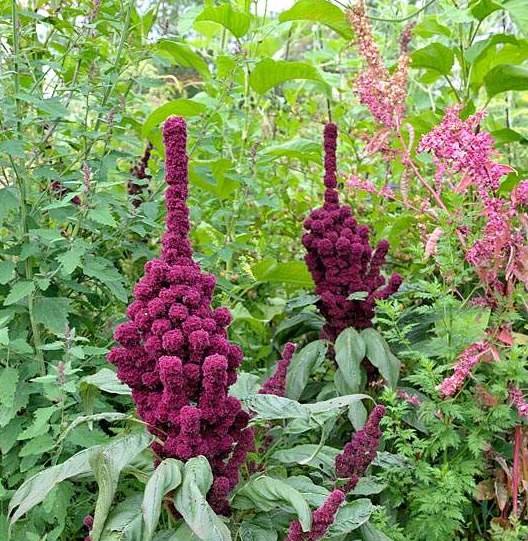Common Names
Elephant Head Amaranth
Botanical Name
Amaranthus gangeticus
Plant Family
Amaranthaceae (Amaranth Family)
Life Cycle
Annual
Hardiness Zone
2-11
Habit
Grows to a striking height of approximately 4 feet to 5 feet, and can reach even taller when pampered with fertile soil and abundant moisture. This impressive variety hails from Germany as a cherished heirloom from the Victorian era, carrying with it an air of history and tradition. Its very large flower clusters display a breathtaking deep magenta-burgundy color, elegantly supported by strong, sturdy stalks and vibrant green leaves. This unique amaranth is certain to capture attention in your garden, and it gets its amusing name from the captivating resemblance of the flower to an elephant’s head with an upraised trunk. On our farm, we've affectionately nicknamed this extraordinary variety ‘F@#& You Amaranth’ because many visitors perceived the one-fingered salute when greeting this plant
Sun/Soil
Full sun, well-drained fertile, moist garden soil.
Sowing
Amaranth is best direct sown as soon as the soil warms in spring. Take care is transplanting as they may bolt due to transplant stress. Start early if you wish the seed to ripen before fall.
Growing/Care
Water regularly for large plants with tender edbile leaves.
Harvesting
Harvesting can be done by shaking the mature flowers into a bag or bucket.
Culinary Uses
The seeds are harvested and used as a gluten-free grain. The leaves are gathered to eat fresh in salads, or cooked in many other dishes. Contains high levels of vitamin A, vitamin C, vitamin K, magnesium, manganese, iron and folate.
Medicinal Uses
Anti-inflammatory and supportive of cardiovascular health.
Other Uses
The seeds are commonly used as bird food.
Themes
Dye plants, Attracts Pollinators, Cut Flowers.
